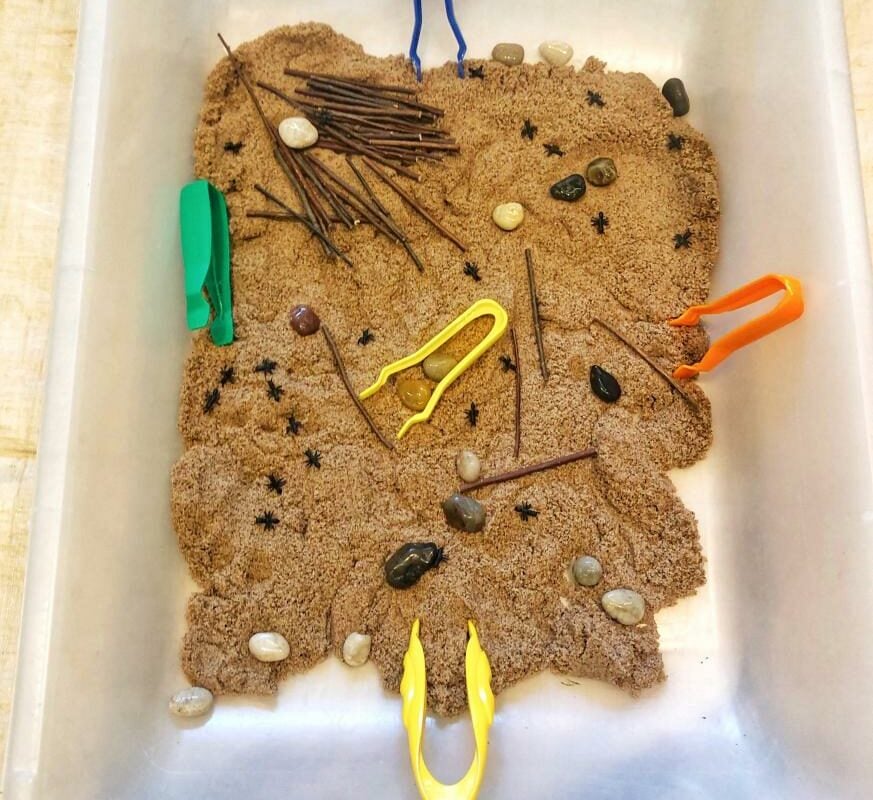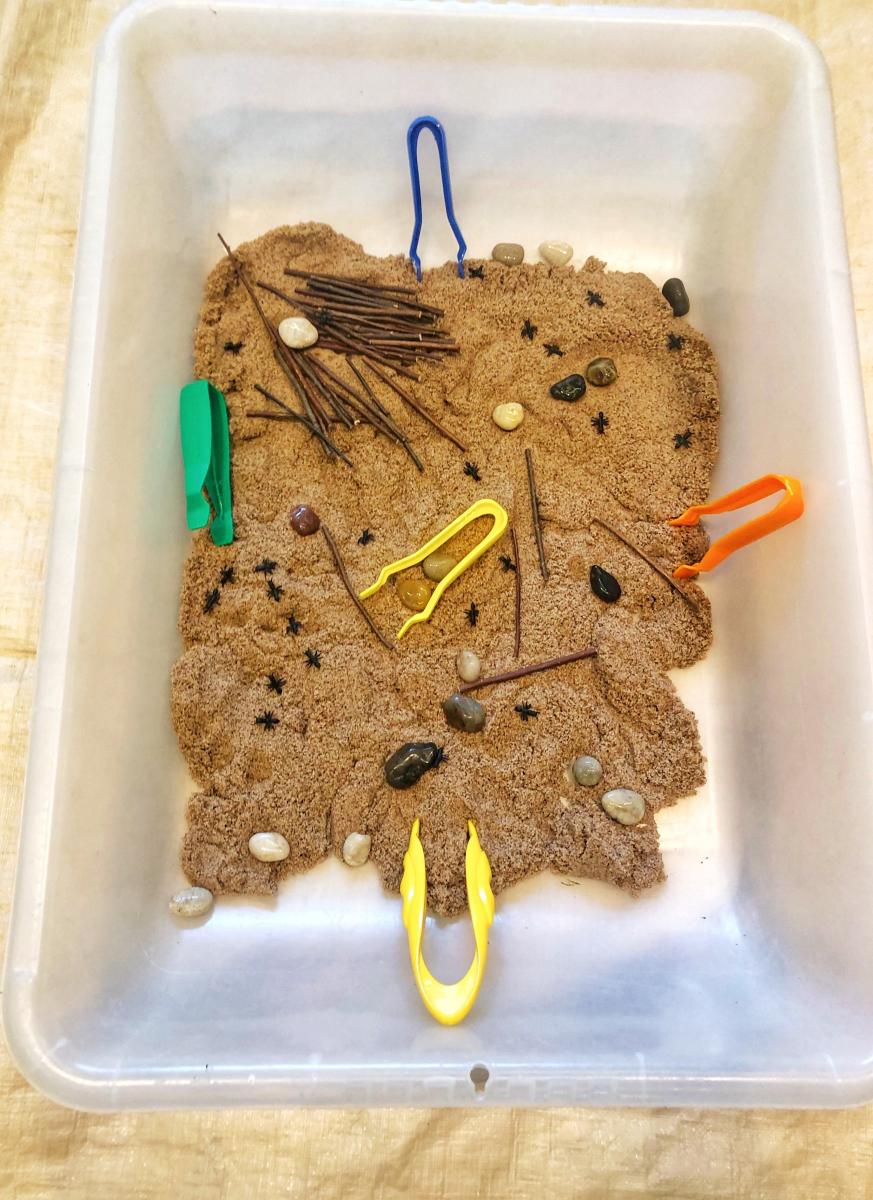Insect Sensory Bin

A sensory bin is typically a plastic tub or a large container of some kind, filled with materials and objects carefully selected for toddlers to play with to stimulate their senses. A sensory bin can be filled with a variety of different materials such as water beads, water, sand, shredded paper and more.
their senses. A sensory bin can be filled with a variety of different materials such as water beads, water, sand, shredded paper and more.
Today we will learn how to make an Insect Sensory Bin with supplies you can order online or substitute with things you can find around the house and backyard.
SUPPLIES
o See-thru activity tub or any plastic tub or container
o Play sand (kinetic sand is my favorite) or dirt, grass, leaves. (for substrate)
o Plastic Toy insects o Twigs, leaves, rocks (to help decorate and replicate insect habitat)
o Magnifying glasses (to get a closer look)
o Tweezers, tongs, or forceps (to pick up insects and help develop motor skills)
o Large photos of insects and their habitats (To teach what insects and their habitats looks like
SET UP
• Fill sensory bin with 1/2 inch to 3/4 inches of substrate you chose.
• Arrange materials gathered (rocks, twigs, etc..) to try to replicate insect’s habitat.
• Place insects of your choice in the bins.
• Place magnifying glasses and tweezers in or by the sensory bin. See picture for an example.
Introduce Activity:
• Share some interesting facts about insects and where they live.
• For example, insects have 3 distinct body parts. They have a head, thorax, abdomen and 6 legs. Some insects have wings.
• When wings are present in insects, they commonly consist of two pairs. For example, grasshoppers, bees, wasps, dragonflies, butterflies and moths have 2 pairs of wings.
• Use tweezers and magnifying glasses to find and explore some of the characteristics of insects.
• Have Fun!!
